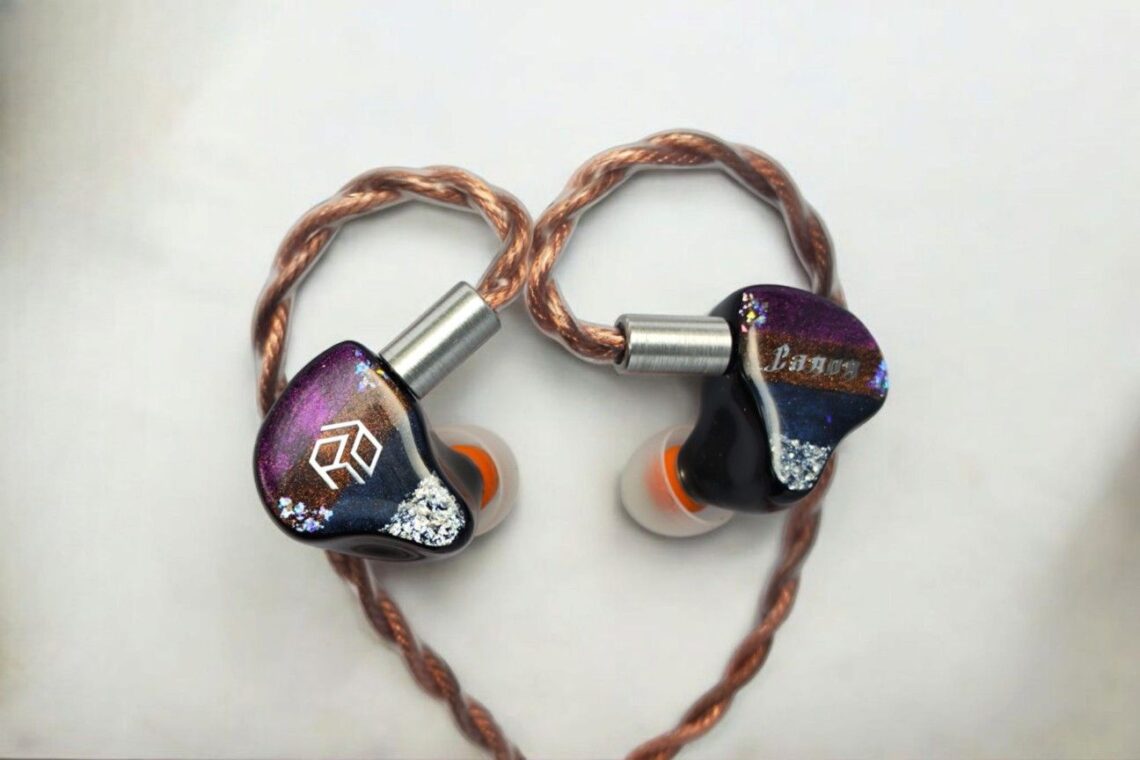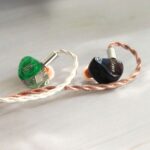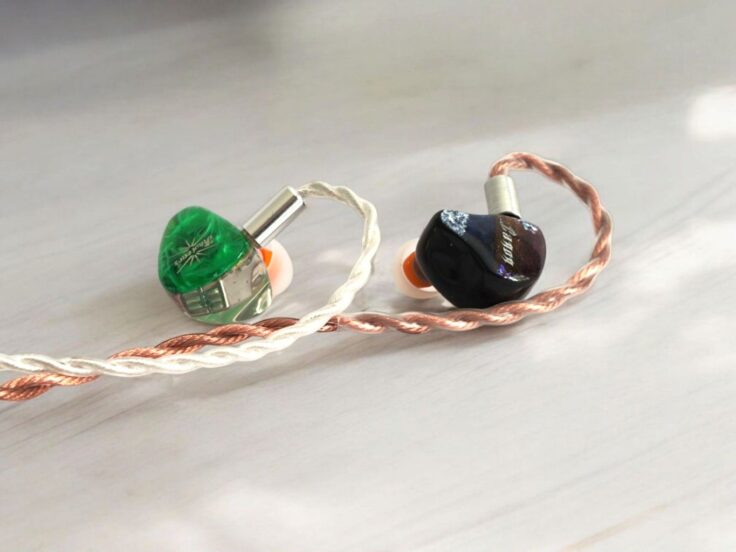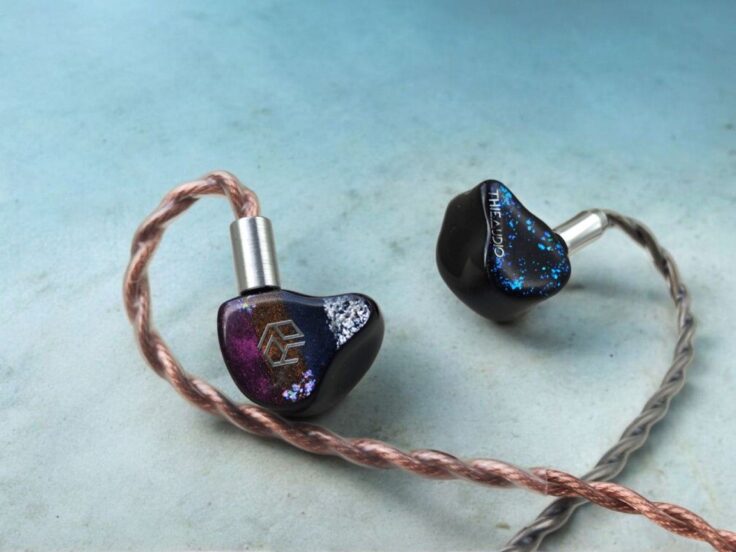The Canon Pro is the third iteration of Yanyin’s Canon-series IEMs, priced at 399 USD / €350 ex.tax. It features a hybrid setup with one dynamic driver and six balanced armatures—two more than the Canon 2. It uses four electronic crossovers, four physical ducts, and has a 3D-printed resin shell.
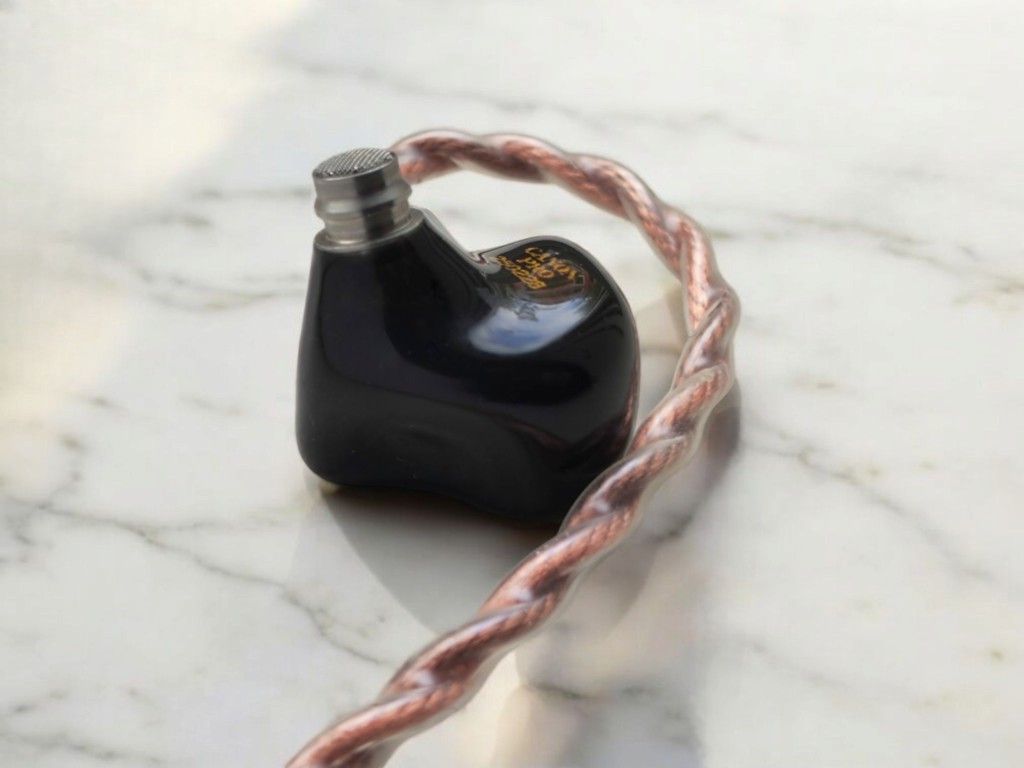
YANYIN
YanYin, established in 2020, is a small Chinese IEM manufacturer. Their stylized “Rd” logo doesn’t only refer to “Research and Development”, but also the name Yan-Yin. To my knowledge, “Yan” means “eye” or “research,” and “Yin” means “to do.”
While they’ve done OEM work, their in-house lineup includes the models Aladdin, Canon, Canon 2, Canon Pro, Yanyin x HBB Mahina, Carmen, Moonlight, and Moonlight Ultra. All are higher-end IEMs priced above 300 USD.
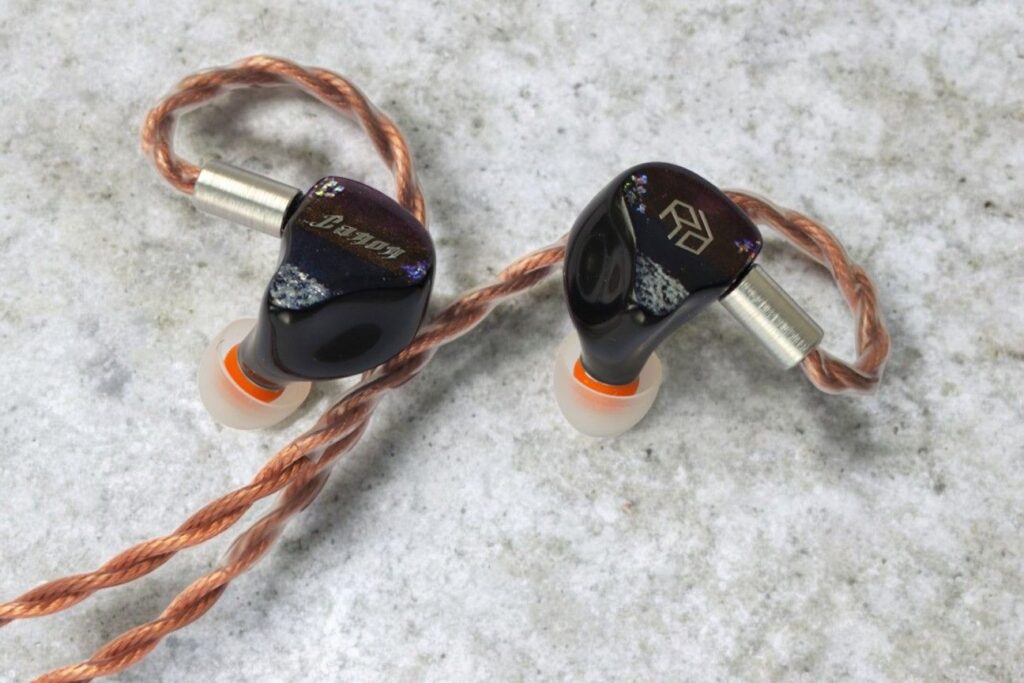
YANYIN CANON PRO SPECIFICATIONS
- Type: Hybrid driver resin housing
- Impedance: 18 Ohms
- Sensitivity: 104 dB
- Driver Units: 1DD + 6BA Driver Configuration
- Frequency Response Range: 20 Hz – 25 kHz
- Passive Noise Reduction: 26 dB
Current price and availability:
- Linsoul : YanYin Canon Pro
- Amazon: YanYin Canon Pro
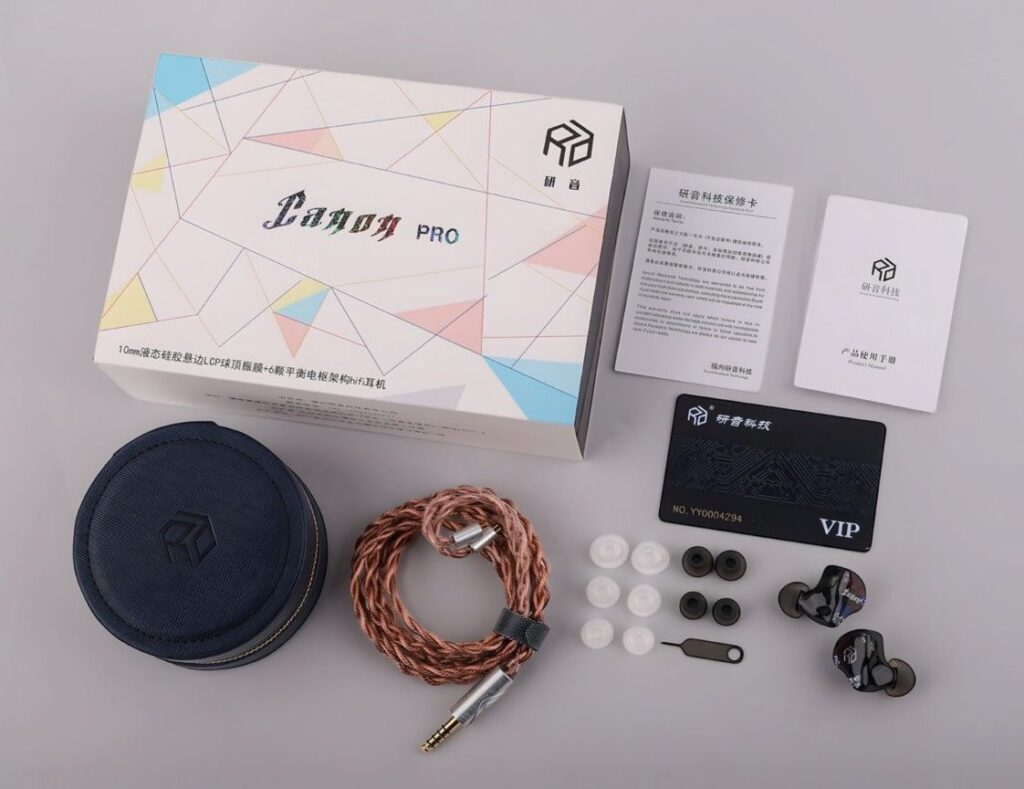
IN THE BOX
- Canon Pro IEMs
- One puck shaped, blue leather case with zipper
- Black silicone tips in 3 sizes
- Clear silicone tips in 3 sizes
- 1.2m four-strand detachable cable. You can choose 2.5, 3.5 or 4.4mm termination plug at purchase.
- Warranty card with product serial number.
- Instruction manual.
- VIP card with QR code.
- Quality control card.
- A pin tool to move the mini switches.
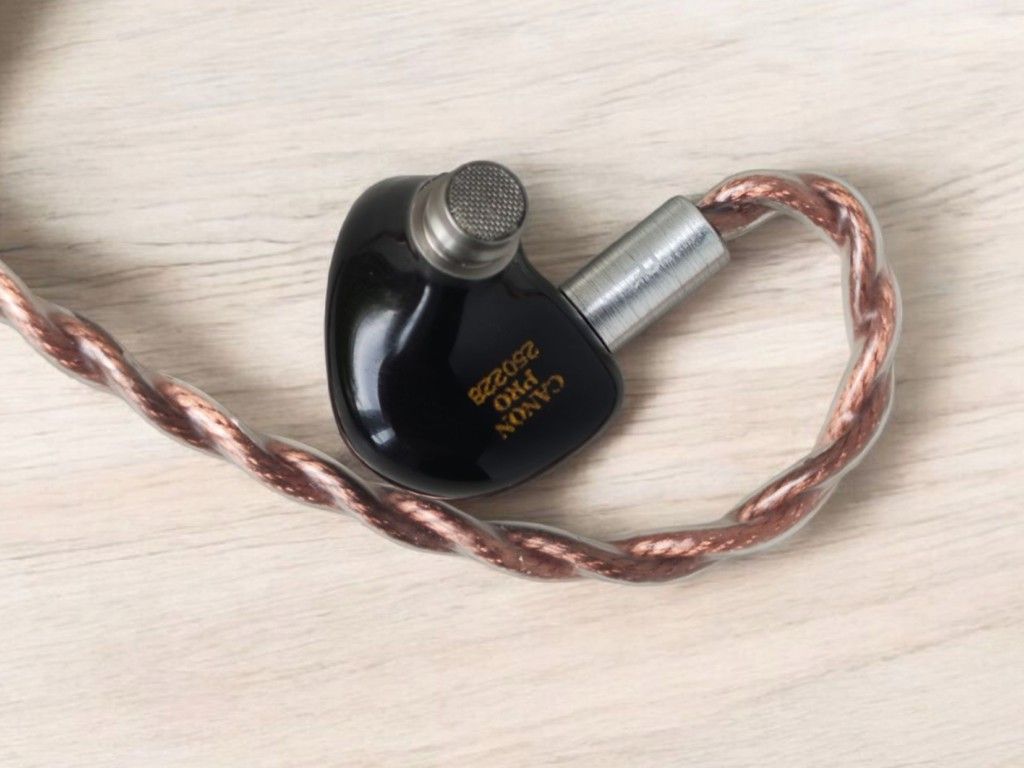
BUILD AND COMFORT
The 3D-printed resin housing is visually appealing, lightweight, and comfortable. Each earpiece features two tuning switches for bass quantity customization. The included braided copper cable is of high quality, with an unusually well-shaped bend (ear hook) closest to the IEM giving improved fit and ergonomics.
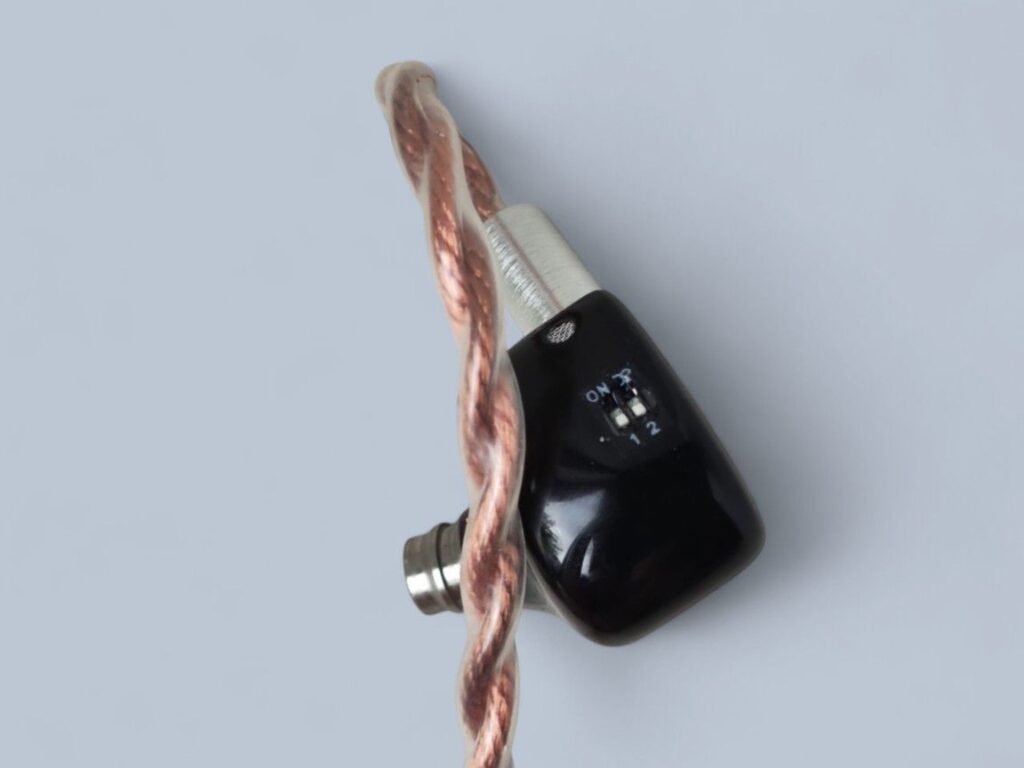
ABOUT TUNING SWITCHES
The switches are designed primarily for bass control, but increasing bass can also affect how you perceive treble and mids. Unlike standard EQ adjustments, these switches use an electronic crossover system that maintains signal integrity without introducing distortion. Each switch-setting thus changes the IEM’s impedance.
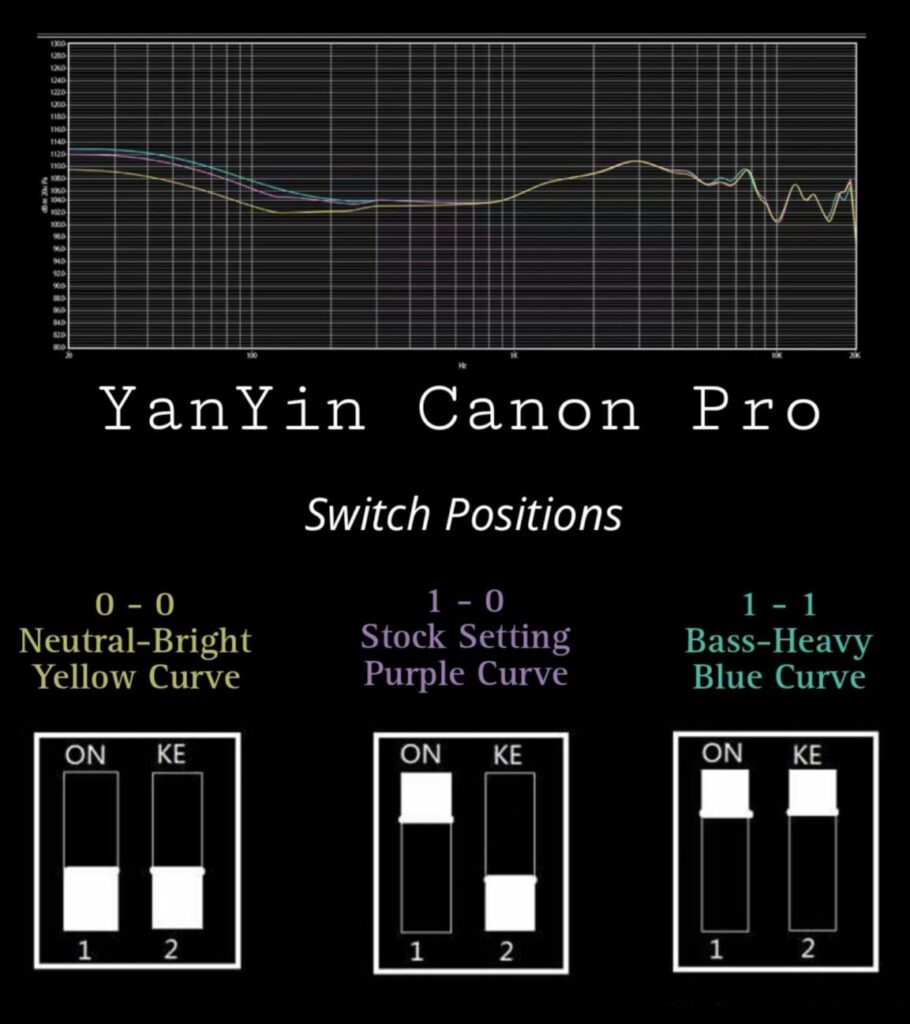
There are basically 3 tuning possibilities:
- With both switches turned off, i.e. switch position 0-0 the amount of bass is the lowest, giving a neutral-to-bright tonality .
- With one switch on and the other off, positions 1-0 and 0-1, the sound is nearly identical—both settings add a slight bass boost. Position 1-0 is the stock setting.
- Position 1-1 adds the most bass.
In practical use, the switches perform well. While the differences between settings aren’t drastic, they are noticeable enough to justify their inclusion. Each combination adjusts bass quantity to varying degrees without altering other parts of the frequency range. The 0-0 position delivers the leanest bass and also makes it sound the tightest and most textured, while the other settings introduce more rumble. But again, it’s subtle changes rather than transformative ones.
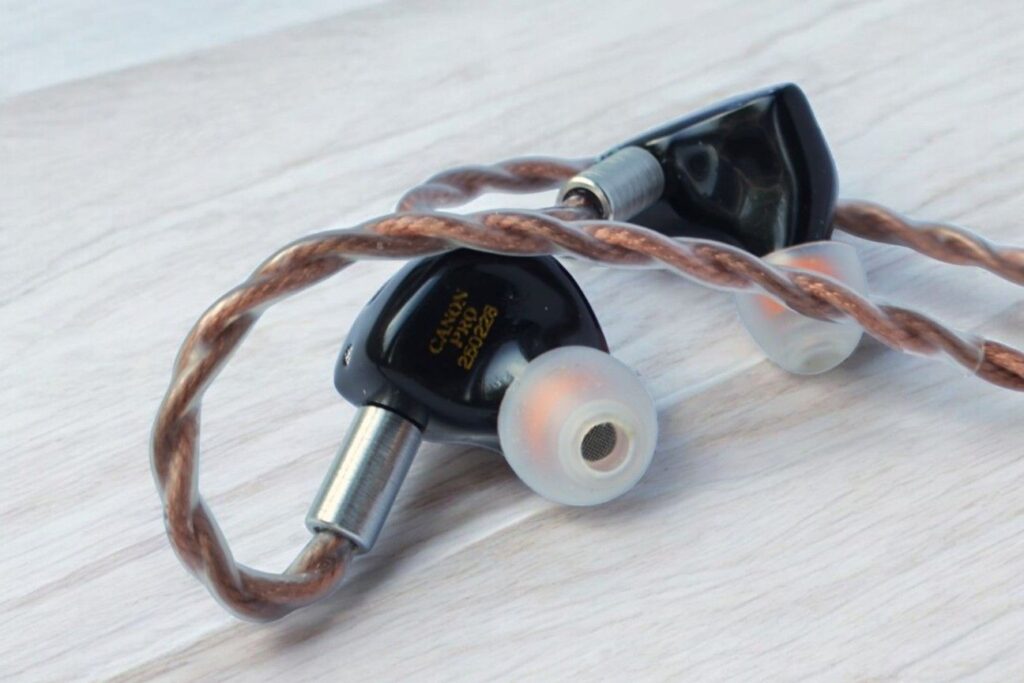
LISTENING IMPRESSIONS
Associated equipment:
- Amplifier: Topping A90
- DAC RME ADI-2 DAC FS
- Tips: SpinFit CP145
Switches: 1-0 giving medium bass quantity. This is the factory setting – switch 1 on/up, switch 2 is off/down.
Calle 7 by Vinicius Cantuaria
The sound is large, dynamic, and detailed, with excellent instrument separation and imaging. What stands out most, however, is the overall sense of naturalness in the presentation.
Jambi by Tool
Guitars are crisp without being harsh, vocals are well separated, and the bass is neutral in quantity yet defined and textured. Despite the somewhat bright and upfront presentation, sibilants remain gentle, avoiding harshness or fatigue.
Summer 3 Vivaldi Recomposed by Max Richter
There’s a wealth of detail and nuance often lost with lesser gear. The sound is noticeably more three-dimensional and visceral compared to lesser IEMs. Timbre is excellent, and there’s a natural pulse to the music, with microdynamics working together to bring it to life.
New Life Baby Paris by Mala
The bass is powerful and visceral without being overwhelming. There’s an impressive sense of space and three-dimensionality. The treble is crisp yet delicate, striking a fine balance between detail and smoothness.
Rocket Man by Bob James Trio
The presentation is very spacious, with excellent imaging and a strong sense of depth. Bass is detailed and well-separated, revealing nuances that are often lost with lesser IEMs.
As Before by Olga Konkova
The cajón drum isn’t particularly thunderous, but the percussion is snappy, and both vocals and piano are upfront and clear in the mix, with the vocals still feeling somewhat velvety.
It Could Be Sweet by Portishead
The bass is modest in quantity but tight and well-detailed. Vocals take center stage, coming through as clear as a mountain creek. The sense of depth is excellent, and the treble is crisp in a clean, non-edgy manner.
Escape Route by Boris Blank
It’s a relatively bright rendition with a somewhat light bass presence. There’s plenty of detail, excellent microdynamics, and a spacious soundstage with lots of separation between instruments.
Spontanious Compositorius by Thomas Agergard
The saxophone is bright with strong presence in the upper mids. The bass, while modest in quantity, is detailed and visceral. Percussion comes through nuanced and crisp, without ever becoming piercing.
Mahler’s Symphony No 2 III by Paavo Järvi
The presentation is very spacious with good separation between elements. There’s an abundance of microdetail and excellent microdynamics. Kettle drums are punchy but not particularly full-bodied, while strings and wind instruments are rendered with notable delicacy and nuance.
Young Vivaldi RV 820 by Modo Antiquo
The strings are tender and delicate, yet still crisp, with a noticeable bite and attack that adds energy to their presentation.
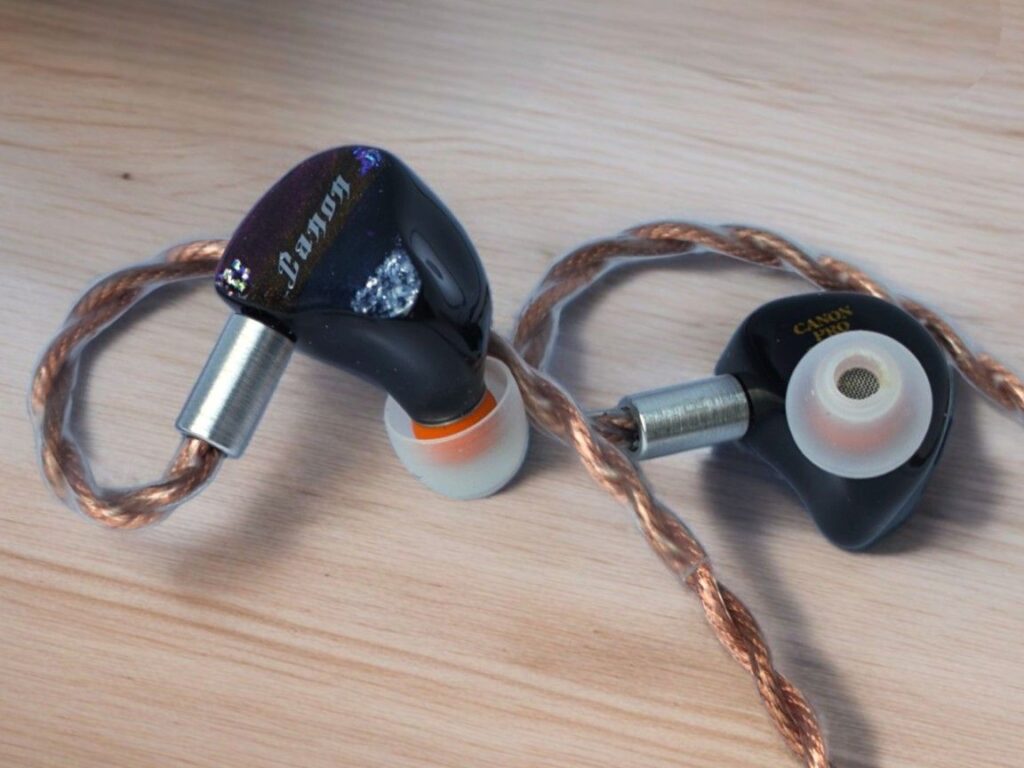
WRAPPING IT UP
Sound Signature
The sound signature of the YanYin Canon Pro changes slightly with the switch settings, but not by much. With the medium bass 1-0 setting, the bass is relatively modest in quantity, the mids are well-balanced, and the treble is crisp and clear without being aggressive.
With the 0-0 setting, the bass is leaner and tighter, while the 1-1 setting offers a fuller and bolder bass. However, the Canon Pro never becomes a true basshead IEM. The midrange and treble aren’t noticeably affected by the switches, although the bass adjustments may lead you to change the volume, which could indirectly affect the overall sound. For me, though, I didn’t find that to be the case.
Treble
The treble is nuanced and delicate, yet remains crisp and articulate, providing clarity without being harsh.
Midrange
The mids are quite upfront, with vocals sounding energetic and clear more than dark or lush. There’s a slight brittleness to the sound, giving it a more focused, less warm character.
Bass
The bass with the 1-0 position is what I’d describe as neutral, with no real boost. While the switches allow for some adjustment, they won’t turn the Canon Pro into a bass-heavy IEM without EQ. However, the quality of the bass is excellent—detailed and visceral, providing a strong sense of presence without overwhelming the overall sound.
Soundstage and Imaging
The stage size is impressive for an IEM, but what really stands out is the three-dimensionality. It offers width, height, and depth, with plenty of space between instruments. This allows all the subtleties to come through clearly, adding to the sense of realism and depth in the sound.
Detail, Dynamics, and Timbre
The level of detail is impressive for the price, with strong macro dynamics and even better micro dynamics. In terms of timbre, the sound is very organic but with a slightly bright and crisp character, rather than lush and mellow.
COMPARISONS
Associated equipment:
- Amplifier: Topping A90
- DAC: RME ADI-2 DAC FS
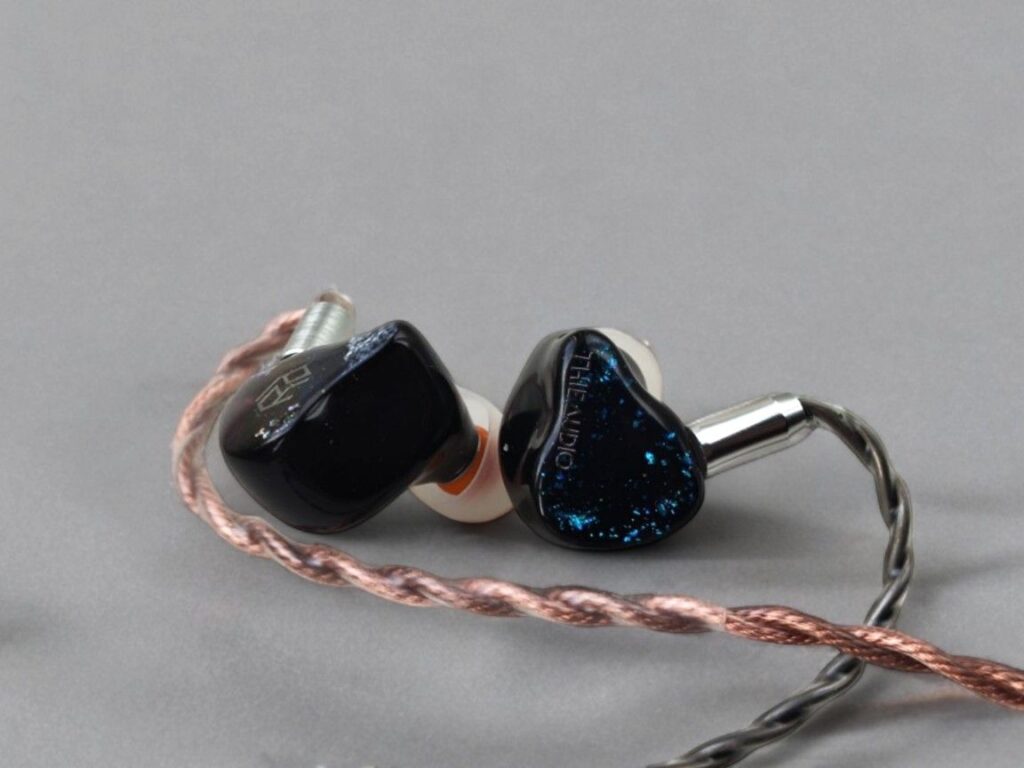
THIEAUDIO HYPE vs YANYIN CANON PRO
The Thieaudio Hype 4 is priced identically to the Canon Pro at 399 USD. Like the Canon Pro, it is a hybrid, and uses dual 10mm dynamic drivers for the bass, two balanced armature drivers for the mids, and two balanced armature drivers for the highs.
When compared, the Thieaudio Hype 4 and YanYin Canon Pro are closely matched in build quality and overall performance. However, they offer distinctly different sound signatures: the Canon Pro is brighter and crisper, while the Hype 4 is darker and more laid-back. Both deliver the high levels of detail and dynamics expected at this price point.
Full comparison review found here:
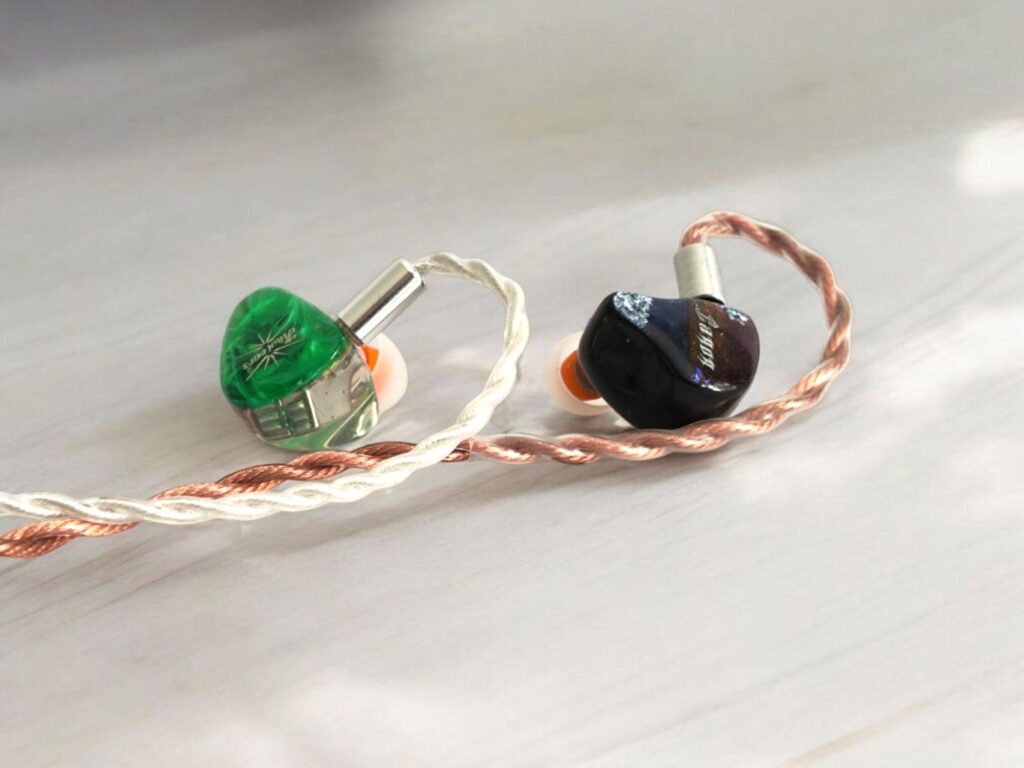
KIWI EARS ORCHESTRA LITE vs YANYIN CANON PRO
The Kiwi Ears Orchestra Lite (249 USD) is a balanced armature-only IEM, utilizing a total of eight drivers: two ultra tweeters for the treble, four midrange drivers for the mids, and two subwoofer drivers for the lows.
When comparing it to the Canon Pro, I find the tonal balance of the two earphones quite similar. There’s no radical variation in frequency response between them, and both sound very neutral. However, they differ significantly in their character. They have very different timbre and micro articulation. In general, the Canon Pro sounds more detailed and brittle, while the Orchestra Lite is thicker and more rounded. On the technical side, the Canon Pro excels across the board. However, the Orchestra Lite has a very nice timbre, offering a robustness that is often quite appealing. It sounds warmer without altering the frequency response much, giving the music a different character.
Full comparison review found here:
- Linsoul: Orchestra Lite
- Amazon: Orchestra Lite
AMPLIFICATION
Amps matter. I’ve been using the Topping A90 desktop amp for all my testing so far, but now it’s time to check out some portable options.
Starting with my POCO F5 phone’s headphone output, it already sounds really good. As in “you don’t really need more”-good.
The tiny Jade/FiiO JA11 dongle, sounds pretty much the same, but has a tad more separation and is slightly crisper.
Kiwi Ears Allegro Mini sounds slightly better, a little more clarity and dynamics. The Allegro Pro doesn’t sound much different to the Mini, maybe a bit smoother.
The Letshuoer DT03 sounds similar, with a slightly warmer tonality, as it often has. However, the xDuoo Link2 Bal2, sounds a bit cleaner and smoother and I feel it’s the best so far.
The THX Onyx is more expensive and sounds good, but doesn’t offer anything more than the xDuuo.
The Dragonfly Cobalt performs great with the Canon Pro, clean and neutral, refined and subtle. The soundstage is large, there is a good sense of space between instruments. It’s snappy and detailed, neutral and delicate.
Finally, the Chord Mojo is always great with IEMs. It’s lusher sounding than the Cobalt,closer to the THX Onyx. I don’t think it’s worth the extra money over the xDuuo or the Cobalt, however.
In conclusion, the YanYin Canon Pro is easy to drive and performs well with a wide range of sources, consistently delivering great sound regardless of the amplifier used.
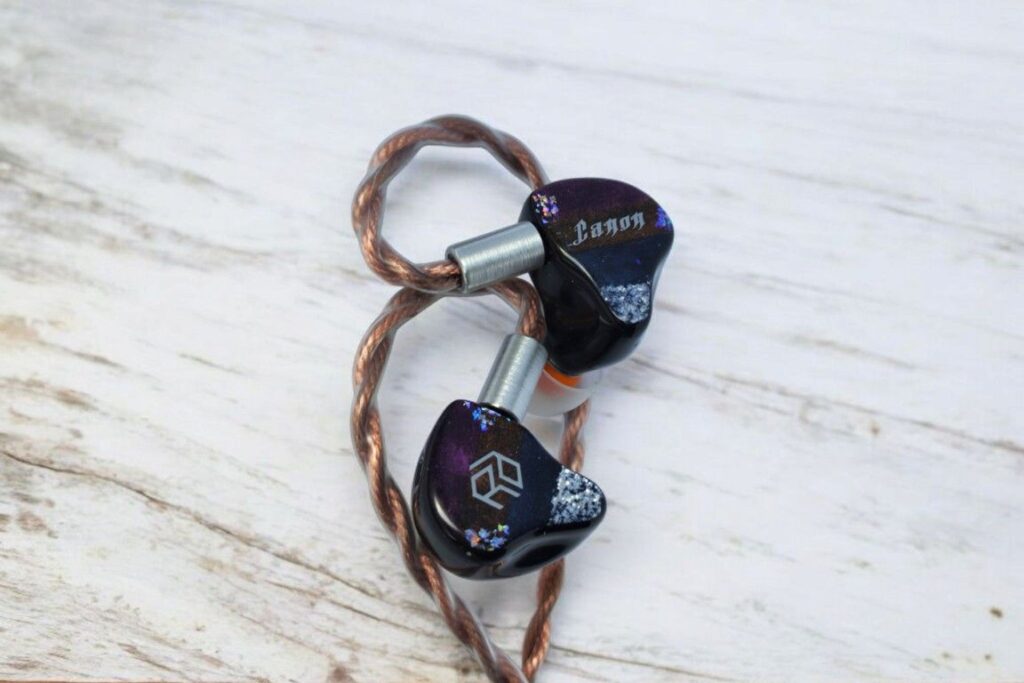
CONCLUSION
The YanYin Canon Pro delivers a refined, balanced sound with excellent technical performance. It offers subtle tuning flexibility, crisp treble, a clear upfront midrange, and tight, detailed bass. With strong imaging, spacious staging, and great dynamics, it’s a natural, engaging listen. It is well worth noting that it performs well across sources. If this sounds appealing to you it has my warmest recommendations.
Thanks for reading. You can support us by purchasing anything using any of our affiliate links.
- Linsoul : YanYin Canon Pro
- Amazon: YanYin Canon Pro
Any purchase you make on Amazon or Linsoul with any of our affiliate links will give us a small provision at no cost to you.
We only get a provision for items that are not returned, so there’s no incentive for us to recommend something that’s not good.
Linsoul : Headphones, Earbuds, Wireless Earbuds, Desktop DAC/AMP, Portable DAC/AMP, Digital Audio Players,
Amazon: Headphones, IEMs, Headphone Amplifiers, Home Audio or Anything else.
.
If you enjoyed this article or other content on The Headphoneer, you might consider leaving a small donation to keep this website up and running. No donation is too small. Thanks for supporting us!
If you like our work please follow us on Instagram, Facebook and Twitter , it will help us grow. Sharing is caring 🙂


